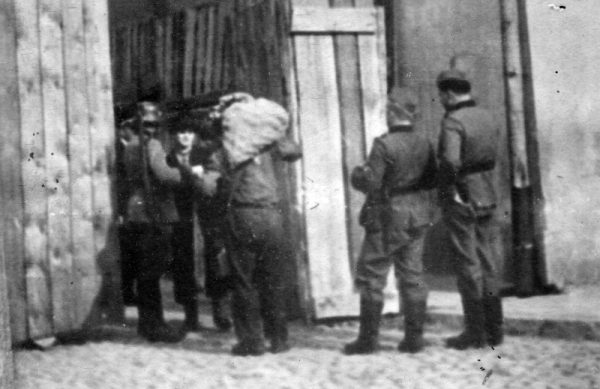Holocaust
Poland’s loss in September 1939 led to the fourth partition of its territory. The borders between the occupiers were specified in the Boundary and Friendship Treaty between the USSR and the Third Reich, signed at the end of September 1939 (modified in comparison to Molotov-Ribbentrop Pact’s provisions). Over 2 million Jews remained on the zones occupied by the Third Reich and on the General Government area, and about 1.5 million – in the Soviet zone.
When the fights ceased, German police formations began to commit a barrage of crimes against the Polish and Jewish population. According to the nazi extermination policy of the “lower” races, a plan aimed at controlling the Jewish community in the occupied country was drawn up. It assumed registration and concentration of non-Aryan population in the designated and separated parts of towns (ghettos) and establishing there Jewish administration (Judenrat). In the cities (Warsaw, Cracow, Łódź, Białystok) ghettos were located in the separated, usually the poorest districts. Almost all Jewish population was concentrated there at the beginning of 1943. Jews weren’t allowed to leave those isolated zones. Also, they were supposed to wear armbands with a six-pointed star of David.
During the next years of occupations, the following restrains were imposed. Jews were deprived of all rights, forbidden to use some parts of the streets, enter cafes, public buildings; street trade and using public means of transport were not allowed without a permit. Their belongings were seized, bank accounts blocked, pensions and other social benefits were taken back.
Jews were incapacitated.


